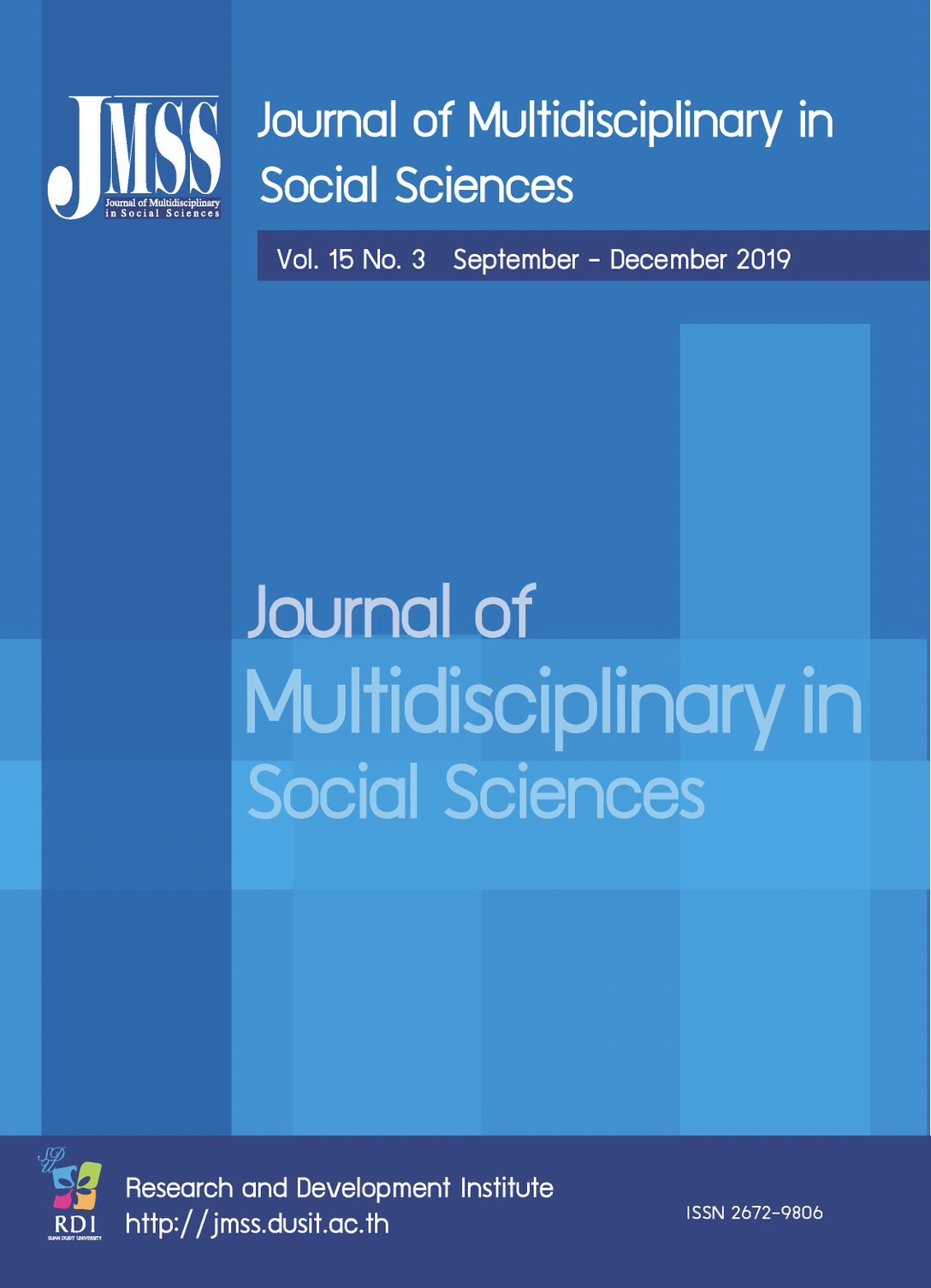The Consumer Decision Making Style Influencing SKU Rationalization within Higher Education Institutions in Amphoe Mueang, Nakhon Pathom
Keywords:
Consumer Styles Inventory, SKU Rationalization, Confirmatory Factor AnalysisAbstract
The purpose of this research were (1) to study the relationship of confirmatory factor analysis of the consumer decision making style influencing Stock Keeping Unit (SKU) rationalization within higher education institutions in Amphoe Mueang, Nakhon Pathom and (2) to study the decision making approach for selecting appropriate amount of SKUs for products or goods in the convenience store business. Furthermore, the samples in this study were collected which including students and staff who are in the higher education institutions in Amphoe Muang, Nakhon Pathom with a total number of 660 persons and data were collected by using questionnaire. The statistics used in this study consisted of descriptive statistics which are frequency, percentage, average, standard deviation and statistical hypothesis testing, structural equation modelling (SEM), relationship model between consumer decision making style and SKU Rationalization by AMOS program.
References
Chernev, A. (2012). Assortment and consumer choice: an interdisciplinary review. Foundations and Trends in Marketing, 6(1), 1-61.
Grubor, A., & Milicevic, N. (2015). The analysis of FMCG product availability in retail stores. Inzinerine Ekonomika-Engineering Economics, 26(1), 67-74.
Hair, J. F., Anderson, R. E., Tatham, R. L., & Black, W. C. (1998). Multivariate Data Analysis (5th ed). Prentice Hall, Upper Saddle River, New Jersey.
Hübner, A., (2017). A decision support system for retail assortment planning. International Journal of Retail & Distribution Management, 45(7/8), 808-825.
Malinowskia, E., Karwana, M. H., Sunb, L., & Pintoc, J. M., (2018). Packaged gas supply chain planning with network-wide SKU rationalization. International Journal of Production Economics, 204, 346-357.
Osterlind, S. J. (2002). Constructing Test Items: MultipleChoice, Constructed-Response, Performance, and Other Formats (2nd ed.). Spring St, New York: Kluwer Academic
Rovinelli, R. J., & Hambleton R. K. (1977). On the use of content specialists in the assessment of criterion referenced test item validity. Dutch Journal of Educational Research, 2, 49-60.
Sam, K. M., & Chatwin, C. (2015). Online consumer decision-making styles for enhanced understanding of Macau online consumer behavior. Asia Pacific Management Review, 20(2), 100-107.
Schumacker, R. E., & Lomax, R.G. (1996). A beginner’s guide to structural equation modeling. Lawrence Earlbaum Associates, 10 Industrial Ave Ste 3 Mahwah, New Jersey.
Sproles, G. B., & Kendall, E. (1986). A methodology for profiling consumers’ decision making styles. The Journal of Consumer Affairs, 20(2), 268-279.
Tai, S. (2005). Shopping styles of working Chinese female. Journal of Retailing and Consumer Services, 12(3), 191-203.
Tanksale, D., Neelam, N., & Venkatachalam, R. (2013). Consumer decision making styles of young adult consumers in India. Procedia-Social and Behavioral Sciences, 133(3), 211-218.
Tarnanidis, T., Frimpong, N. O., Nwankwo, S., & Omar, M. (2015). A confirmatory factor analysis of consumer styles inventory: Evidence from Greece. Journal of Retailing and Consumer Services, 22, 164-177.
Usman, K. (2008). Determination of drivers of stock-out performance of retail stores using data mining techniques (Doctoral dissertation). Massachusetts Institute of Technology.
Walsh, G., Hennig-Thurau, T., Wayne-Mitchell, V., & Wiedmann, K. (2001). Consumers’ decision-making style as a basis for market segmentation. Journal of Targeting, Measurement and Analysis for Marketing, 10(2), 117-131.
Downloads
Published
How to Cite
Issue
Section
License

This work is licensed under a Creative Commons Attribution-NonCommercial-NoDerivatives 4.0 International License.








